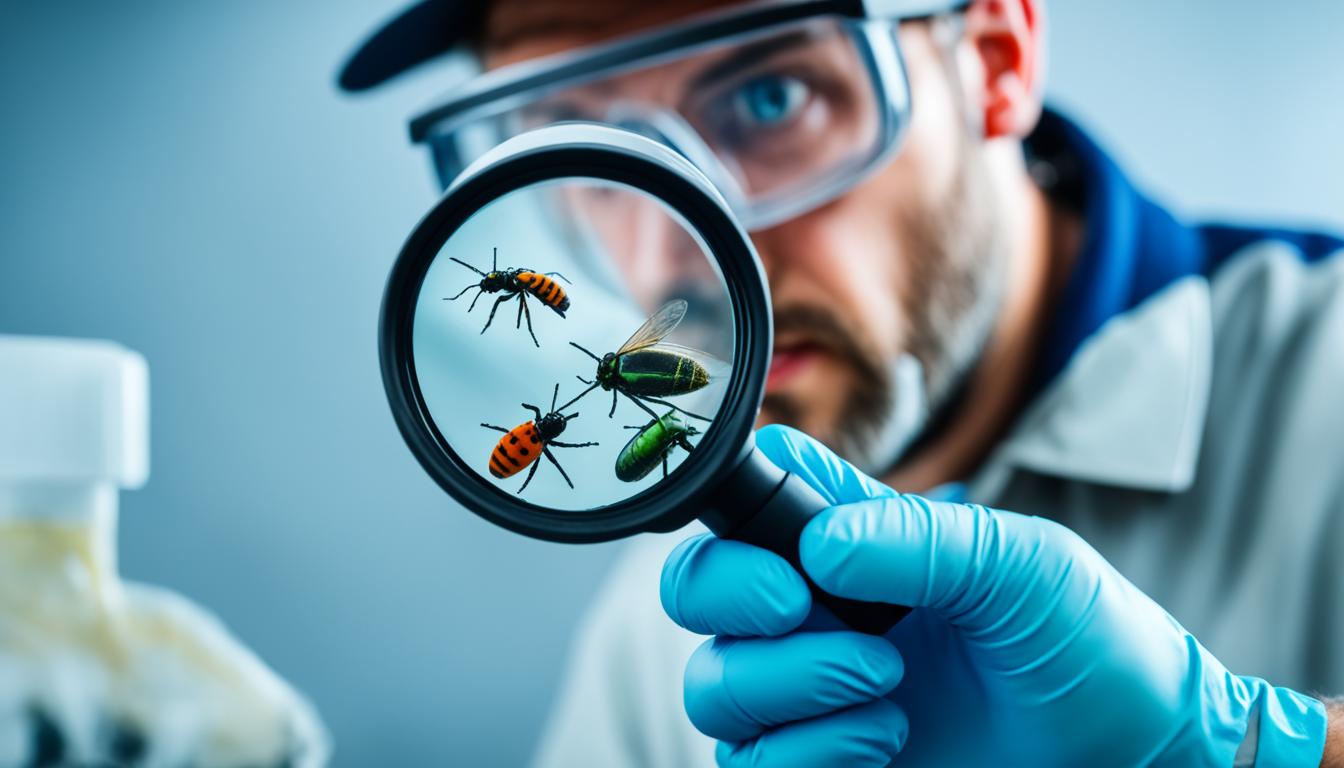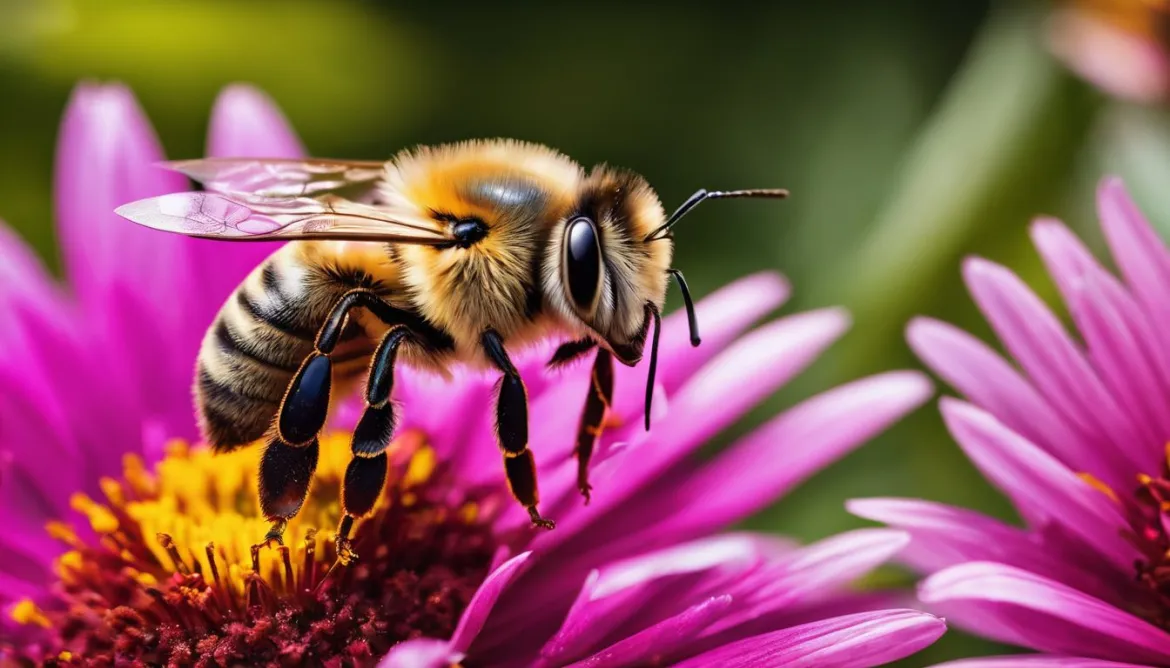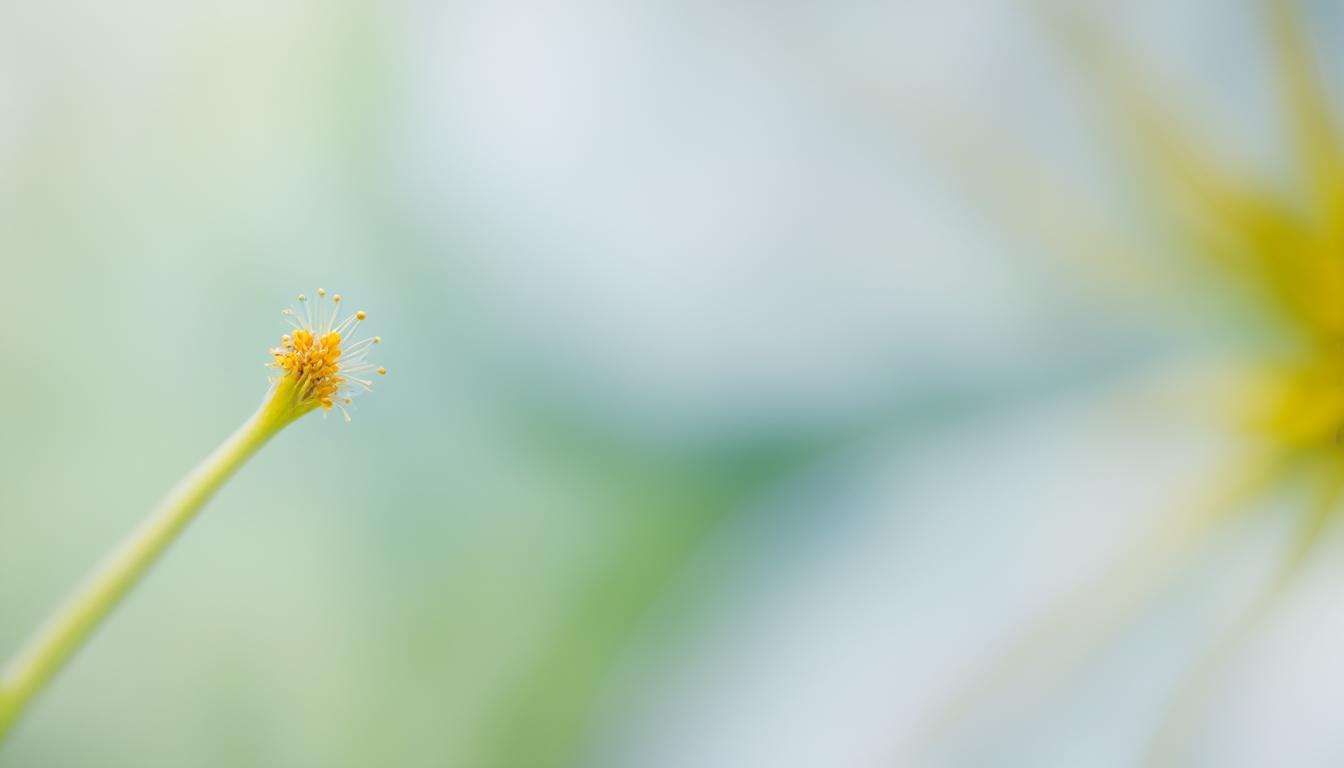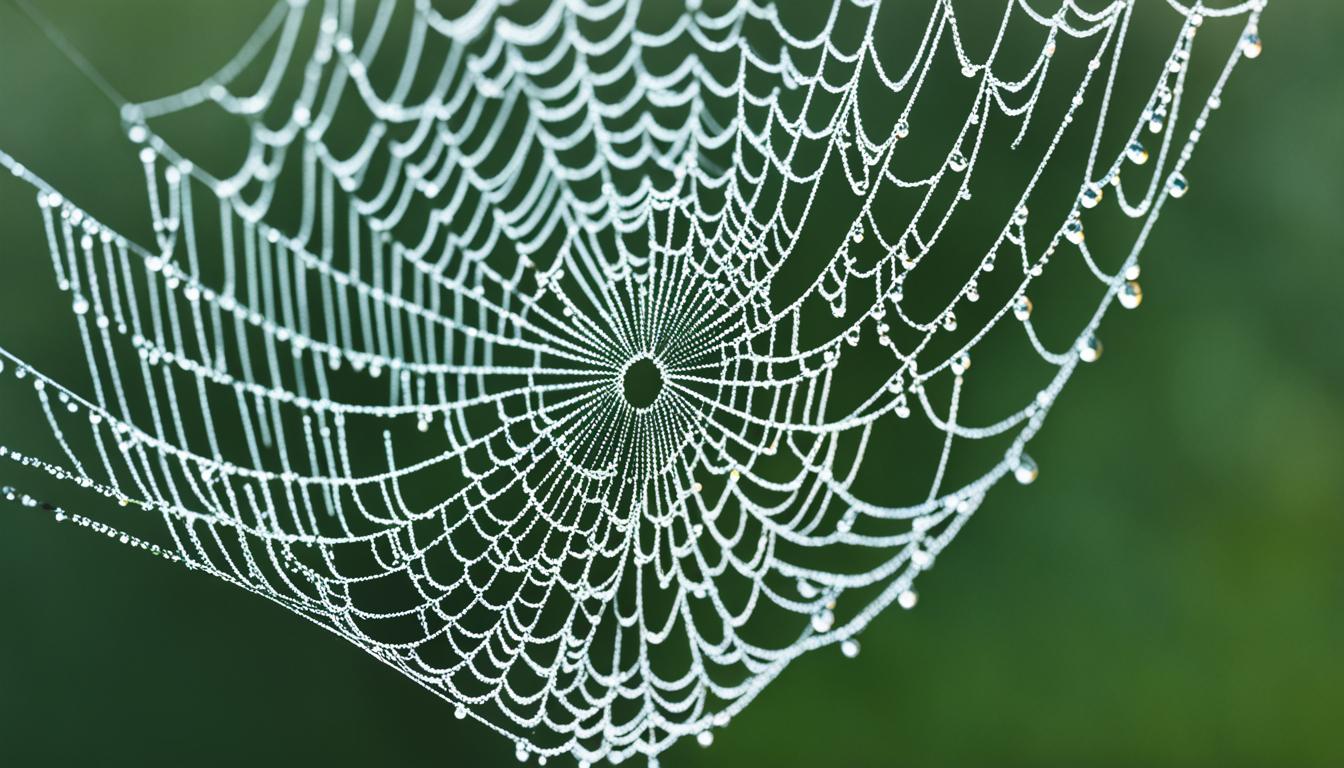Welcome to our guide on safe macro photography with live subjects. Macro photography allows us to capture the mesmerizing details of small subjects, but it’s essential to prioritize their safety and preserve their natural habitats. In this article, we will provide you with valuable tips and guidelines for working with live subjects while ensuring their well-being and capturing stunning macro photographs.
Key Takeaways:
- Respect the natural environment and habitats of live subjects
- Maintain a safe distance from the subjects to avoid disturbance or harm
- Use non-invasive techniques to minimize stress on the subjects
- Do not alter the behavior or environment of the subjects for photography purposes
- Prioritize the safety and well-being of live subjects while capturing stunning macro images
Understanding Macro Photography and Its Techniques.
Macro photography is a fascinating genre that allows photographers to capture the intricate details of small objects in stunning detail. By magnifying subjects at a scale that is usually unseen by the naked eye, macro photography reveals a hidden world that is both mesmerizing and awe-inspiring. To achieve remarkable macro shots, it is essential to master various techniques that enhance the overall image quality and creative impact.
One of the fundamental techniques in macro photography is using dedicated macro lenses. These lenses are specifically designed to provide optimal magnification and focus at close distances, allowing photographers to capture even the tiniest details with exceptional clarity. With the ability to achieve life-size magnification or higher, macro lenses are indispensable tools for capturing the intricacies of small subjects.
Another crucial aspect of macro photography is ensuring camera stability. Due to the close proximity to the subject, any slight movement can result in blurry images. To overcome this, it is advisable to use a tripod or other stabilizing tools to keep the camera steady. This not only helps maintain sharp focus but also allows for precise composition and framing of the subject.
Proper lighting is also vital in macro photography. With small subjects, light can easily be blocked or cause unwanted shadows. Natural lighting, such as diffused sunlight or overcast conditions, is often preferred as it provides soft and even lighting that brings out the finest details. Additionally, using reflectors or diffusers can help control and manipulate the direction and intensity of light for more engaging macro shots.
Selecting suitable backgrounds is another technique that can greatly enhance the visual impact of macro photographs. Simple and unobtrusive backgrounds help draw attention to the subject, allowing it to stand out and become the focal point. By using wide apertures and depth of field techniques, photographers can also blur the background, creating a pleasing bokeh effect that adds a sense of depth and separation.
Understanding and utilizing these macro photography techniques will enable photographers to capture stunning images that showcase the beauty and intricacy of small subjects. Whether it’s capturing the delicate details of flowers, the mesmerizing patterns on insects, or the texture of everyday objects, macro photography allows us to appreciate the extraordinary in the ordinary.
“Macro photography takes us on a journey into a world that often goes unnoticed. It opens our eyes to the incredible beauty and complexity that surrounds us, even in the smallest of things.”
Now that we have covered the foundational techniques of macro photography, let’s delve deeper into the best locations and timing for macro photography in the next section.
| Macro Photography Tips | Macro Photography Techniques |
|---|---|
| Use dedicated macro lenses for optimal magnification and focus. | Maintain camera stability with tripods or stabilizing tools to avoid blurriness. |
| Ensure proper lighting by utilizing natural light or controlled lighting techniques. | Select suitable backgrounds that enhance the subject and create a pleasing bokeh effect. |
| Get up close to capture intricate details that are unseen by the naked eye. | Experiment with depth of field to create different levels of focus and blur. |
| Pay attention to composition and framing to create visually engaging images. | Use reflectors or diffusers to control the direction and intensity of light. |
Location and Timing for Macro Photography.
Choosing the right location and timing are crucial for successful macro photography. By selecting areas with diverse vegetation, such as wetlands, meadows, and botanical gardens, photographers can attract a wide variety of insects and small creatures. This rich biodiversity provides ample opportunities to capture unique and captivating macro subjects.
Additionally, timing plays a significant role in macro photography. Many insects and spiders are more active during specific times of the day, so understanding their behavior and preferred hours of activity can greatly increase the chances of finding subjects. Early morning and late evening often offer ideal lighting conditions and opportunities to observe and photograph subjects in their natural habitats.
When photographing in the early morning or late evening, the soft and warm lighting can enhance the colors and textures of macro subjects, creating a visually pleasing effect. These hours also tend to be less windy, which helps maintain stability and reduce the chances of motion blur in your photographs. By aligning your photography sessions with the natural rhythms of the subjects, you can capture stunning macro images that showcase their unique characteristics.
Here are some timing considerations for different macro subjects:
- Insects: Many insects, such as butterflies and dragonflies, are most active in the morning when they are searching for food and warming up their flight muscles. In the late afternoon, they may become active again before seeking shelter for the night.
- Bees: Bees are typically most active during mid-morning and mid-afternoon when flowers are in full bloom.
- Flowers: Different flowers have different blooming times, and their peak freshness and vibrancy can vary throughout the day. It’s best to observe flowers at different times to capture them at their prime.
- Spiders: Spiders tend to be more active during the early morning and evening hours. They often rebuild their webs during these times, presenting unique opportunities for photographing their intricate creations.
Exploring different locations and timing techniques in macro photography opens up a world of possibilities. It allows us to capture the hidden beauty of nature’s tiniest creatures and showcase their intricate details for others to admire and appreciate.

“The early bird catches the worm, but the patient macro photographer captures its intricate details.” – Anonymous
Developing Patience in Macro Photography.
When it comes to macro photography, patience is an invaluable virtue. Taking the time to slow down, observe your surroundings, and wait for the perfect moment can greatly enhance the quality of your macro shots. By cultivating patience, photographers can capture unique and captivating macro images.
One of the first steps in developing patience is to walk slowly and scan your surroundings. Pay attention to any movement or color contrasts that catch your eye. Even the smallest hint of activity can lead to incredible macro photography opportunities. Remember, the tiniest creatures and details can often be easily overlooked, so stay alert and patient.
Listening can also be a helpful tool in macro photography. Insects make distinct sounds, whether it’s the buzzing of wings or the soft rustling of leaves as they crawl. By tuning in to these sounds, you can locate potential subjects and capture them in action.
Quote:
“Photography is a patient pursuit. It requires the ability to wait, observe, and seize the perfect moment. Macro photography amplifies this need for patience as you enter a miniature world filled with endless wonders.” – Jane Miller, Macro Photographer
Remember that each macro shot has its own unique timing. Some subjects may require hours of observation, while others may present themselves within minutes. Embrace the unpredictability and embrace the waiting game.
Patience Checklist:
- Walk slowly and scan your surroundings.
- Pay attention to movement and color contrasts.
- Listen for insect sounds to locate potential subjects.
- Embrace the waiting game and be prepared for the unpredictable.
Developing patience in macro photography is a journey that allows you to explore the secrets of the natural world in meticulous detail. By immersing yourself in the richness of your surroundings and embracing the waiting game, you’ll capture truly extraordinary macro images that showcase the wonders that often go unnoticed.
| Patience Tips | Benefits |
|---|---|
| Slow down and observe | Discover hidden details and compositions |
| Wait for the perfect moment | Capture unique and captivating macro images |
| Listen for insect sounds | Locate potential subjects in action |
| Embrace the waiting game | Capture the unpredictable and extraordinary |
Exploring Different Perspectives in Macro Photography.
Macro photography allows us to capture the intricate details of small subjects, revealing their beauty in a whole new light. While traditional top-down or straight-on shots are common, exploring different angles and perspectives can add a creative twist to your macro photography compositions. By stepping outside the conventional and venturing into alternative viewpoints, you can create visually engaging images that stand out from the crowd.
Getting low to the ground is a great way to change your perspective in macro photography. By crouching down or even lying on the ground, you can capture subjects from a unique vantage point, highlighting their delicate features and creating a sense of intimacy. This approach allows you to capture details that may be overlooked from a higher viewpoint.
In addition to getting low, consider experimenting with unusual angles to create compelling compositions. By tilting your camera or shooting from unexpected positions, you can add dynamic elements to your photographs and create a sense of depth. For example, capturing a flower from underneath or shooting through a foliage can produce stunning results.
Inspiration can come from observing the world around us. Take time to explore your surroundings, paying attention to different perspectives that catch your eye. Look for interesting textures, lines, and shapes that can add visual interest to your compositions. Remember, the more you experiment with perspectives, the more you will discover unique and captivating ways to capture macro photography shots.
“Photography is an art of observation. It’s about finding something interesting in an ordinary place… I’ve found it has little to do with the things you see and everything to do with the way you see them.” – Elliott Erwitt
Benefits of Exploring Different Perspectives in Macro Photography
- Enhances creativity and encourages originality
- Highlights unique details and textures
- Adds depth and dimension to compositions
- Creates visually engaging images that stand out
Tips for Exploring Different Perspectives in Macro Photography
- Experiment with various camera angles and positions
- Get low to the ground or explore unusual shooting positions
- Look for interesting textures, lines, and shapes in your surroundings
- Try shooting from underneath or through foliage for unique perspectives
- Practice patience and take your time to find the perfect angle
By exploring different perspectives, you can unlock a world of creative possibilities in your macro photography. Embrace your curiosity, defy conventions, and let your unique perspective shine through your photographs.
Equipment and Accessories for Macro Photography.
When it comes to macro photography, having the right equipment and accessories is crucial for capturing stunning close-up shots. In this section, we will explore the essential gear that can enhance your macro photography experience.
Dedicated Macro Lenses
A dedicated macro lens is a must-have for macro photography. These lenses provide optimal magnification and clarity, allowing you to capture intricate details of small subjects with precision. Brands like Canon, Nikon, and Sony offer a wide range of macro lenses that cater to different budgets and camera systems.
Tripods and Stabilizing Tools
Camera stability is critical in macro photography to ensure sharp focus and minimize camera shake. Using a sturdy tripod and other stabilizing tools, such as a macro focusing rail or a bean bag, can significantly improve the sharpness of your images. Look for reliable tripod brands like Manfrotto, Gitzo, or Vanguard to keep your camera steady during macro shoots.
Close-up Filters and Extension Tubes
Close-up filters and extension tubes are affordable accessories that can increase the magnification capabilities of your existing lenses. Close-up filters are similar to magnifying glasses that screw onto the front of your lens, allowing you to get closer to your subject. Extension tubes are hollow tubes that sit between your camera body and lens, enabling you to focus on subjects at a closer distance. These accessories are a cost-effective alternative to dedicated macro lenses.
Flash or LED Lights
Proper lighting is essential in macro photography for illuminating your subjects effectively. Using a dedicated macro flash or LED lights can help you control and enhance the lighting conditions. Macro flashes like the Canon MT-24EX or Nikon R1C1 provide even lighting, reducing shadows and allowing for better subject visibility. LED ring lights or panels offer continuous lighting options for a more natural look. Experimenting with different lighting setups can produce creative effects and bring out the details in your macro shots.

By utilizing the right equipment and accessories, you can take your macro photography to the next level. Whether you invest in a dedicated macro lens, use close-up filters and extension tubes, or experiment with different lighting options, having the appropriate gear can greatly enhance your ability to capture stunning macro images.
Lighting Techniques for Macro Photography.
When it comes to macro photography, lighting plays a crucial role in capturing the best details of your subjects. While natural lighting, such as diffused sunlight or overcast conditions, can provide soft and even illumination, there may be situations where it is not sufficient. In such cases, photographers can rely on controlled lighting techniques to ensure proper illumination and enhance the visual impact of their macro subjects.
One effective lighting technique for macro photography is the use of external flash or LED panels. These artificial light sources allow photographers to have full control over the intensity and direction of the light. By positioning the flash or LED panels strategically, photographers can highlight specific details, create interesting shadows, and add depth to their macro photographs.
If you choose to use an external flash, consider diffusing the light to achieve a softer and more natural look. This can be done by attaching a diffuser or bouncing the light off a reflective surface. Additionally, experimenting with different angles and distances can help you achieve the desired lighting effects.
LED panels offer a continuous light source that can be adjusted to create the desired lighting conditions. These panels come in various sizes and color temperatures, allowing photographers to customize the lighting according to their creative vision. LED panels are particularly useful for macro photography because they provide a constant and steady source of illumination, making it easier to compose and focus your shots.
Remember that the key to successful lighting in macro photography is to experiment and practice. Each subject and situation may require different lighting techniques, so don’t be afraid to try out different setups and adjust your lighting accordingly.
Creating Captivating Backgrounds in Macro Photography.
When it comes to capturing captivating macro photographs, choosing the right background is crucial. The background serves as a canvas for your subject, drawing attention to its intricate details and minimizing distractions. With careful composition and creative techniques, you can enhance the visual impact of your macro shots.
To create visually appealing backgrounds, consider the following:
Selecting Simple and Unobtrusive Backgrounds
Opt for backgrounds that are simple and unobtrusive, allowing your subject to take center stage. Plain surfaces, such as neutral-colored walls or uncluttered natural environments, work well as backdrops. By keeping the background minimal, you can highlight the subject’s details and make it stand out.
Utilizing Wide Apertures and Depth of Field Techniques
Explore the use of wide apertures and depth of field techniques to blur the background and create a pleasing bokeh effect. By using a wide aperture (small f-number, e.g., f/2.8), you can achieve a shallow depth of field, where the subject is in sharp focus and the background appears softly blurred. This technique can add a sense of depth and separation to your macro images.
Experimenting with Natural Backdrops and Colored Paper
Take advantage of natural backdrops such as foliage, flowers, or textured surfaces to add visual interest to your macro photographs. These elements can provide a unique context and complement the subject. Additionally, experimenting with colored paper or fabrics can create striking contrasts and enhance the overall composition of your images.
Creating Custom Backgrounds
For a more creative touch, consider creating your own custom backgrounds. This can be achieved by using props, like miniature structures or patterned fabrics, to add depth and visual storytelling to your macro shots. Don’t be afraid to think outside the box and experiment with different materials and textures.
Remember, the background in macro photography should enhance and complement the subject, rather than overshadow it. By carefully selecting backgrounds and employing creative techniques, you can capture captivating macro images that showcase the beauty and intricacy of the small world around us.
Background Techniques for Macro Photography
| Technique | Description |
|---|---|
| Selecting Simple and Unobtrusive Backgrounds | Choose minimal backgrounds that emphasize the subject. |
| Utilizing Wide Apertures and Depth of Field Techniques | Use wide apertures to blur the background and create a bokeh effect. |
| Experimenting with Natural Backdrops and Colored Paper | Incorporate natural elements or colored paper to add visual interest. |
| Creating Custom Backgrounds | Create unique backgrounds with props and textured materials. |
Tips for Macro Photography Safety.
Ensuring the safety of live subjects is paramount in macro photography. As photographers, we have a responsibility to respect the natural habitats of our subjects and avoid causing harm or disturbance. By prioritizing the safety and well-being of the live subjects, we can capture stunning macro images while maintaining our ethical responsibility.
- Maintain distance: When photographing live subjects, it is important to maintain a safe and respectful distance. This helps prevent unnecessary stress or harm to the subjects and allows them to behave naturally.
- Use non-invasive techniques: Instead of handling or manipulating the subjects, opt for non-invasive techniques. For example, use long lenses or extension tubes to get a closer view, without disturbing their natural environment.
- Avoid altering behavior or environment: It is crucial to avoid altering the behavior or environment of the subjects for the sake of a photograph. Interfering with their natural activities or habitats can have negative consequences for their well-being.
“Respecting the safety and well-being of live subjects is not only ethically responsible but also amazes us with stunning macro images that showcase the beauty of the natural world.” – Your Name
By following these tips for macro photography safety, we can capture breathtaking images while ensuring the preservation of the subjects and their natural habitats. Let’s prioritize the well-being of our live subjects and embrace the beauty of macro photography responsibly.
| Tips for Macro Photography Safety | |
|---|---|
| Maintain distance | Respect a safe distance to prevent stress or harm to the subjects. |
| Use non-invasive techniques | Opt for techniques that don’t disrupt the natural environment or behaviors of the subjects. |
| Avoid altering behavior or environment | Don’t interfere with the subjects’ natural activities or habitats for the sake of a photograph. |
Conclusion
Macro photography provides a captivating glimpse into the intricate details and natural beauty of the small wonders in our world. By applying these macro photography tips, techniques, and utilizing the right equipment, photographers can capture stunning images that showcase the hidden marvels of their subjects. Remember, as we embark on our macro photography journey, we must prioritize the safety and well-being of live subjects and act responsibly to preserve their habitats.
Equipping ourselves with dedicated macro lenses, stable tripods, and additional accessories like close-up filters and extension tubes helps us achieve optimal magnification and sharp focus. Additionally, understanding lighting techniques and backgrounds allows us to control the visual impact of our macro photographs, emphasizing the subject’s details and minimizing distractions.
As we venture into the world of macro photography, let us seek out diverse locations and the right timing to capture the abundance of flora, fauna, and insect activity. Through patience and a keen eye for different perspectives, we can create unique compositions that stand out. Remember, each photograph holds the power to illustrate the beauty and fragility of our natural world, and it is our responsibility to respect and protect it as we practice our macro photography techniques.
FAQ
What precautions should I take when working with live subjects in macro photography?
When working with live subjects in macro photography, it is important to ensure their safety and preserve their natural habitat. This includes maintaining distance, using non-invasive techniques, and avoiding altering the behavior or environment of the subjects.
What are some techniques for successful macro photography?
Successful macro photography involves using dedicated macro lenses, ensuring camera stability, utilizing proper lighting, and selecting suitable backgrounds. These techniques help capture stunning macro images with clarity and precision.
How can I choose the right location for macro photography?
Choosing the right location and timing are crucial for macro photography. Areas with diverse vegetation, such as wetlands, meadows, and botanical gardens, attract a wide variety of insects and small creatures. Additionally, timing plays a significant role, as many insects and spiders are more active during specific times of the day.
How can I develop patience in macro photography?
Patience is key in macro photography. Taking the time to slow down, observe your surroundings, and wait for the perfect moment can greatly enhance the quality of your macro shots. Walk slowly, scan for movement and color contrasts, and listen for insect sounds to capture unique and captivating macro images.
How can I explore different perspectives in macro photography?
To add a creative twist to macro photography, experiment with different angles and perspectives. Get low to the ground or capture subjects from unusual angles to create visually engaging macro images that stand out from the crowd.
What equipment and accessories do I need for macro photography?
Essential equipment for macro photography includes dedicated macro lenses, tripods or stabilizing tools to minimize camera shake, and accessories such as close-up filters, extension tubes, and flash or LED lights to enhance macro photography capabilities.
What are some lighting techniques for macro photography?
Lighting is crucial in macro photography. Natural lighting, such as diffused sunlight or overcast conditions, can create soft and even lighting that brings out the best details in subjects. If natural lighting is insufficient, photographers can use controlled lighting techniques, such as external flash or LED panels, to ensure proper illumination.
How can I create captivating backgrounds in macro photography?
Choose simple and unobtrusive backgrounds that draw attention to the subject and minimize distractions in macro photography. Utilize wide apertures and depth of field techniques to blur the background and make the subject stand out. Consider using natural backdrops, colored paper, or creating custom backgrounds to enhance the visual impact of macro shots.
What tips can you provide for macro photography safety?
Macro photography safety is paramount. Respect the natural habitats of your subjects, maintain distance, use non-invasive techniques, and avoid causing harm or disturbance to the live subjects. Prioritize their safety and well-being while capturing stunning macro images.
How can I ensure successful macro photography outcomes?
By following these tips and techniques, utilizing the right equipment, and prioritizing the safety of live subjects, photographers can capture breathtaking macro photographs that showcase the intricate details and beauty of their subjects. Always remember to respect and protect the natural environment while practicing macro photography.
How can I ensure the safety and well-being of live subjects when taking macro photography shots?
When taking macro photography shots, it’s crucial to finetune macro photography techniques to ensure the safety and well-being of live subjects. Avoid disrupting their natural behavior and environment, use a macro lens to maintain a safe distance, and be patient to capture stunning shots while respecting the subjects.




